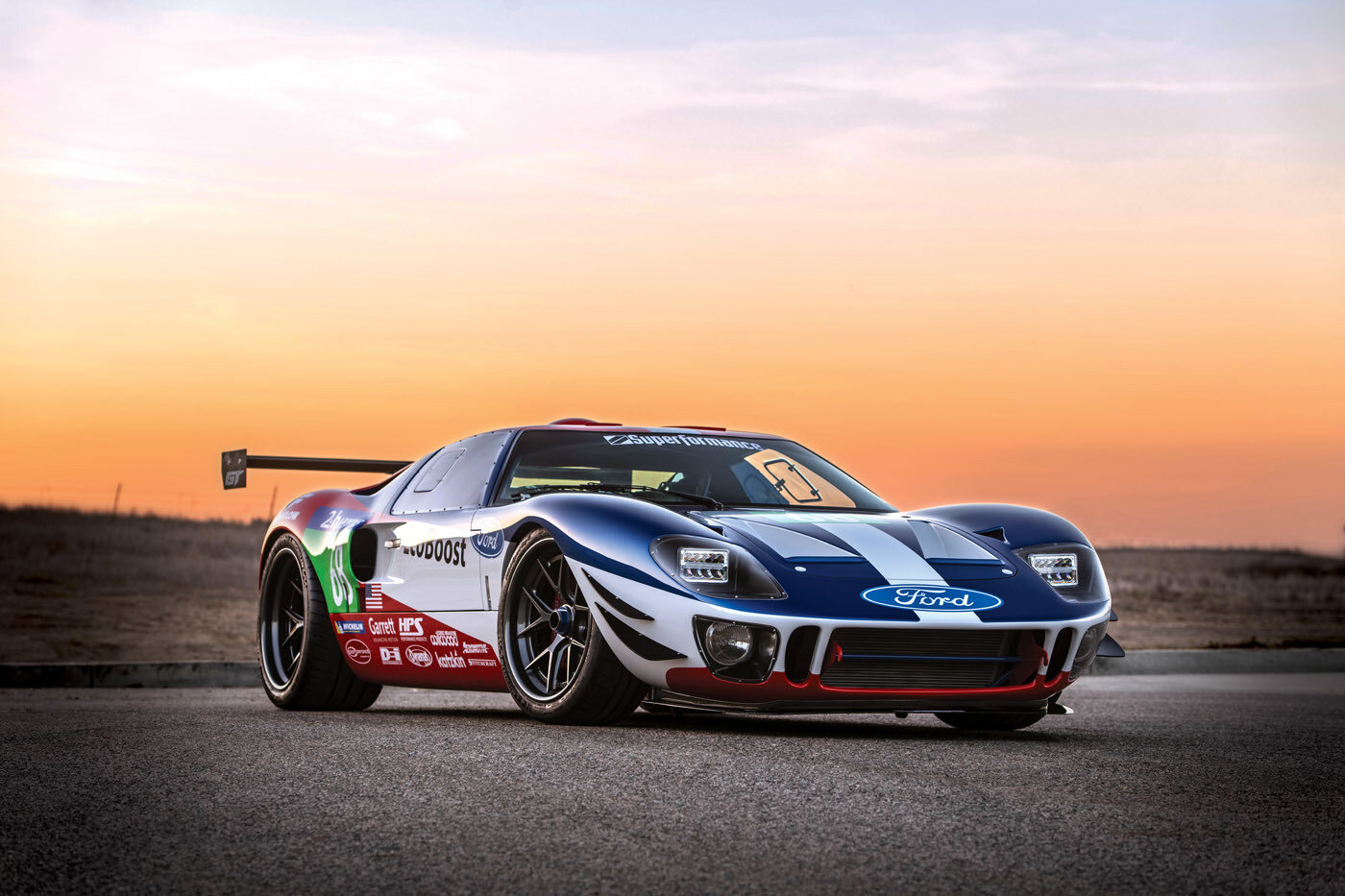
Twin-Turbo EcoBoost-Powered Superformance Future GT40
By Steve Temple
Photos by Drew Phillips, Doug Campbell and V’s Performance
While the replica market generally takes a fond look back at the golden eras of automotive history, there’s no reason to ignore the latest in technological innovations. As a case in point, consider Ford’s EcoBoost engine. The twin-turbo version has proven itself in a wide range of applications, ranging from racing trim in the Ford GT to a workhorse in the Ford F-150, among many others.
A couple years ago, Doug Campbell of Hillbank Motor Corp. thought the EcoBoost would be an effective way to update the Superformance GT40 MkI replica. Hey, if that 600 hp engine competed successfully at Le Mans in 2016, why not drop it in a four-time winner of Le Mans from the late ’60s? The concept is a wonderful merging of both old and new schools of performance and aptly named the Future GT Forty.
By way of background, Doug is a mechanical engineer and appreciates the advanced design of the EcoBoost. “It’s all about constant improvement,” he notes. “The EcoBoost has a lighter, dry-sump setup and port, instead of direct, injection.” But merging this engine from the latest Ford GT with the classic MkI GT40 would present a number of obstacles to overcome.
Vlado Jancev and Pablo Cabrera of V’s Performance took on these challenges, and then some. Tackling them required several months of late nights and tedious custom fabrication, as swapping out the V8 setup for a twin-turbo V6 required a lot of toil and test fitting.
They actually built two cars, Doug’s car and a second with a supercharged Coyote, an engine they were already very familiar with. Since Vlado and Pablo were entering uncharted territory with the EcoBoost, several custom items had to be fabricated. The block itself had to be moved farther back since the transaxle is fixed in place with the rear suspension. Also, the engine mounts needed to be longer. “We had to build the engine for the chassis, rather than the chassis for the engine,” Vlado explains.
That required customizing a Quick Time bellhousing for the Quaife five-speed transaxle. In addition, since the V6 EcoBoost has an overhead cam rather than a pushrod configuration, it’s wider at the top, requiring extra clearance at the frame humps and for the accessory drives. They also had to find room for a pair of intercoolers for the turbo system as well and ended up mounting them on the left and right sides of the cockpit wall.
That was just the beginning as Pablo had to fabricate a custom intake manifold. “That took a lot of time,” he admits. “It was one of the hardest things, and it had to look good too.”
The wiring harness wasn’t a cakewalk either since no schematics or wiring diagrams were available for the EcoBoost. So he reverse engineered the harness on a Ford F-150’s engine and wired up a MilSpec system one piece at a time.
The brain of the engine management system is a MegaSquirt MS3Pro Ultimate. This stand-alone (universal) unit can be programmed to handle the EcoBoost’s dual variable valve timing and also compensate for the massive airflow from the twin Garrett turbochargers. Dual Aeromotive fuel pumps, along with a 3.0-liter surge tank, prevent fuel starvation during hard cornering and braking. Also, MagnaFlow supplied a state-of-the-art and eye-catching exhaust system. All told, the 600 hp EcoBoost is fairly similar to the full-race engine, except for the lack of a dry sump and slightly different heads, since there’s no access to Ford’s secret competition components.
As for the rest of the car, it’s said to have over two-thirds of the steel monocoque chassis’ parts interchangeable with an original GT40 car. One modern exception is a RideTech ShockWave air suspension.
“I got a bit of heat for that,” Doug admits. So why did he make the change? He points out that the system is self-leveling, so it’s more usable as a street car. Normally the nose would scrape over bumps in the road, but the ShockWave Pro System provides 4 to 5 inches of lift for the front splitter.
HRE provided the custom pin-drive rims, and Wilwood upgraded the brake package to 14-inch rotors with six-piston calipers up front and four-piston units in the rear. Additional contemporary components consist of a Centerforce clutch, Dynamat sound insulation, a custom Stitchcraft interior, DEI heat insulation and custom Speedhut gauges. Besides supplying the GT40 MkI rolling chassis, Superformance and Hillbank also painted the current Ford GT livery, added the racing decals and fitted it with modern lighting front and rear.
The look and power of Doug’s Future GT Forty help to celebrate the 50th anniversary of the 1968 24 Hours of Le Mans victory, as well as the modern Ford GT and its current success in the European Le Mans Series. All together, it’s a fine melding of old and new and a homage to the once and future king.

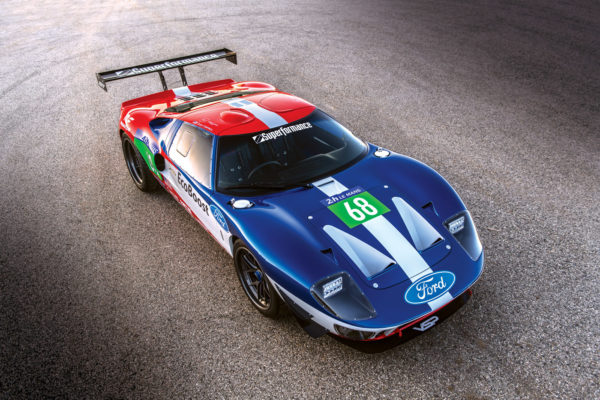
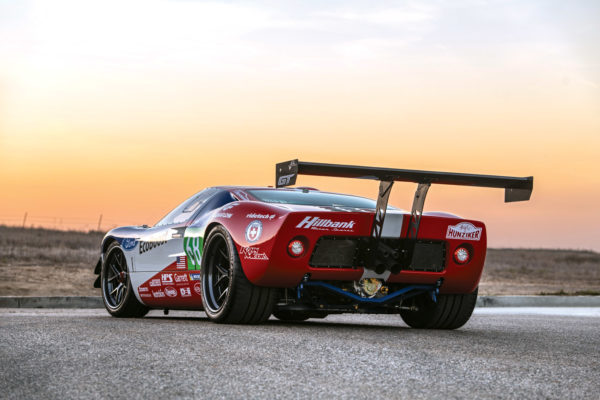
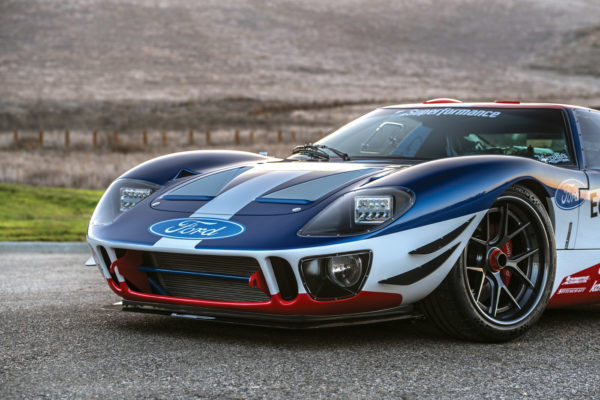
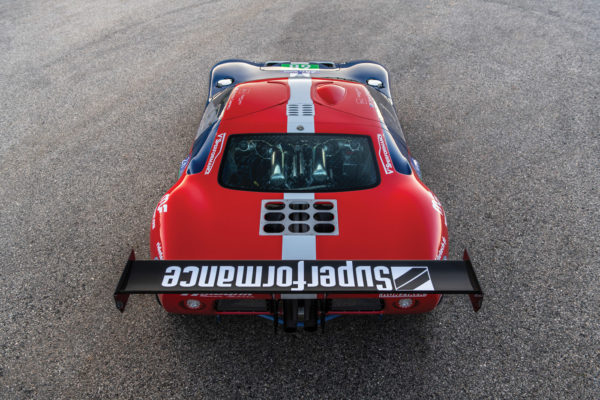
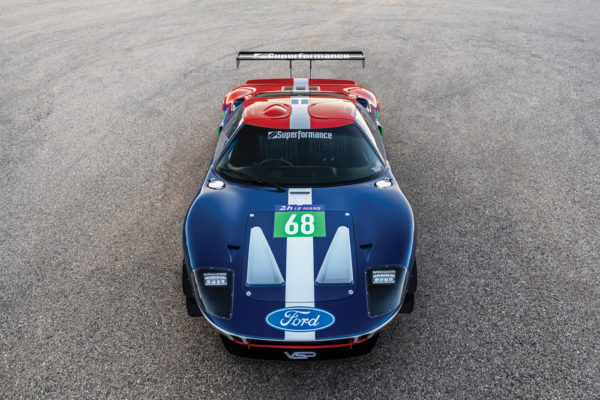
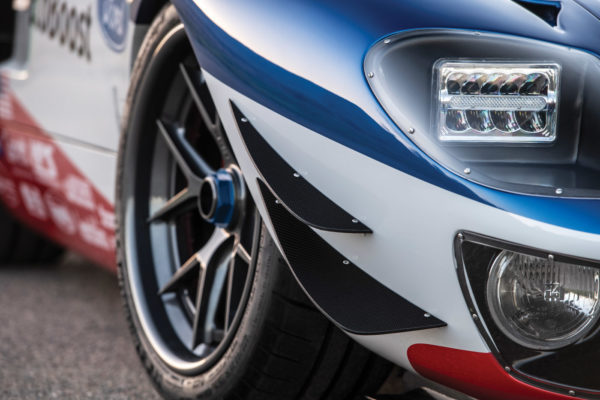
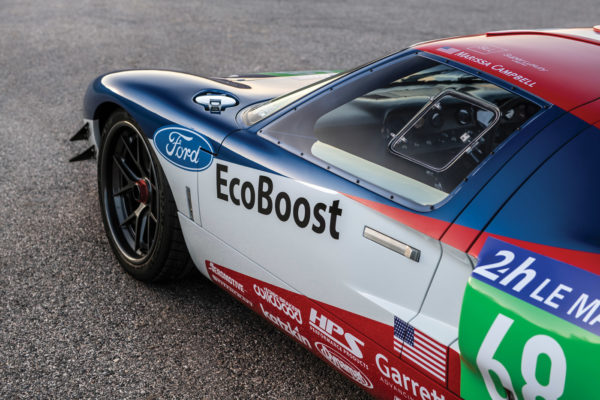
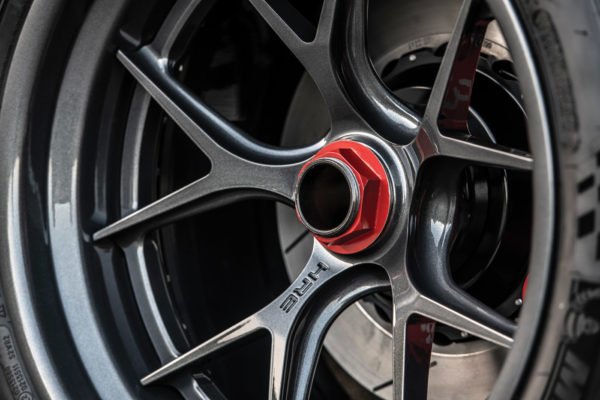
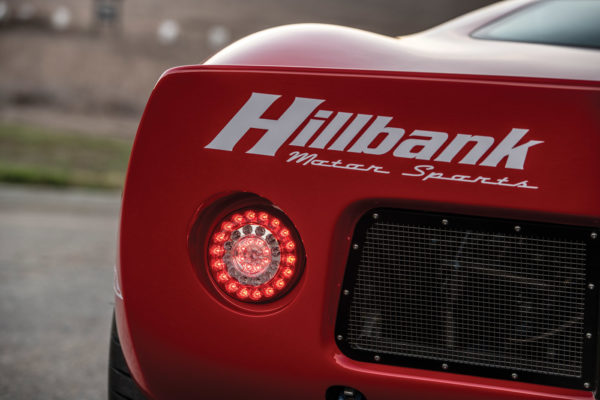
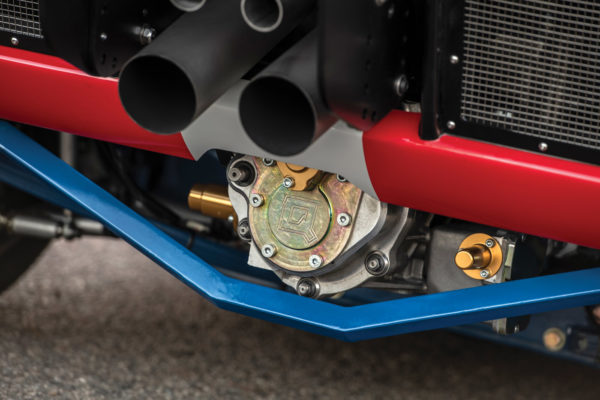
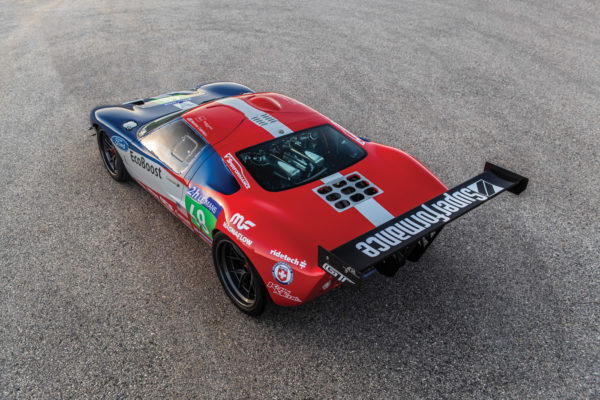
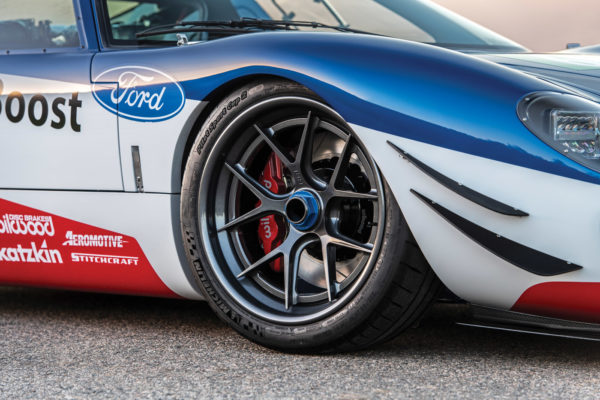
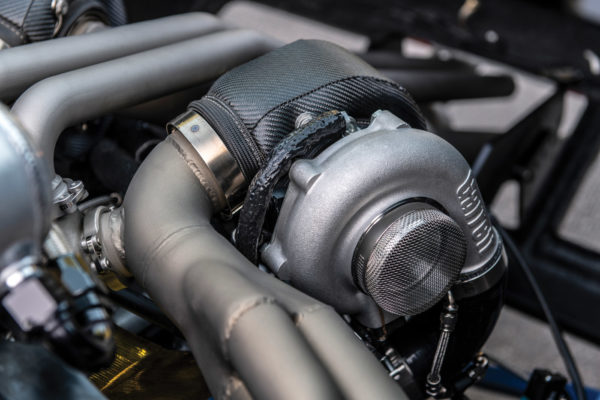
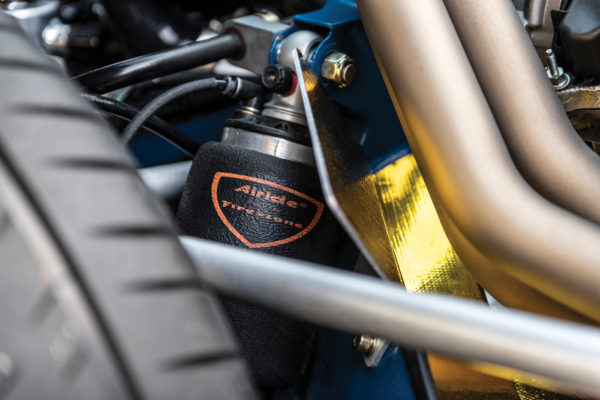
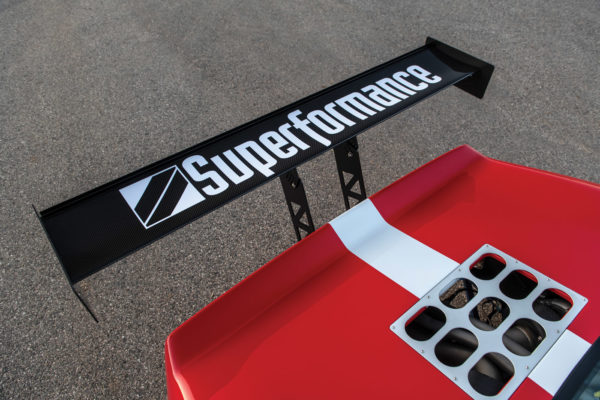
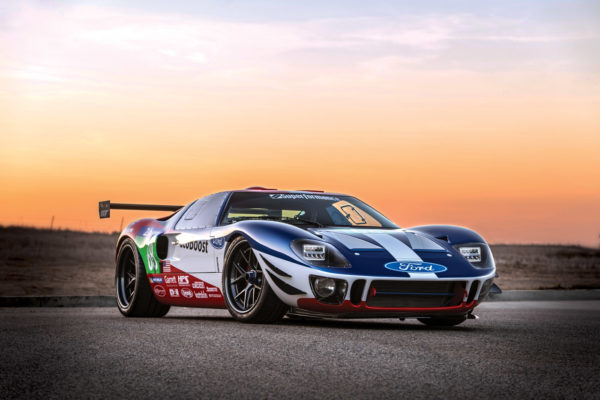
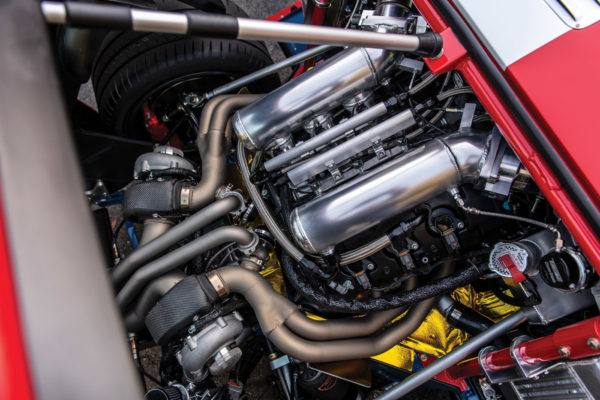
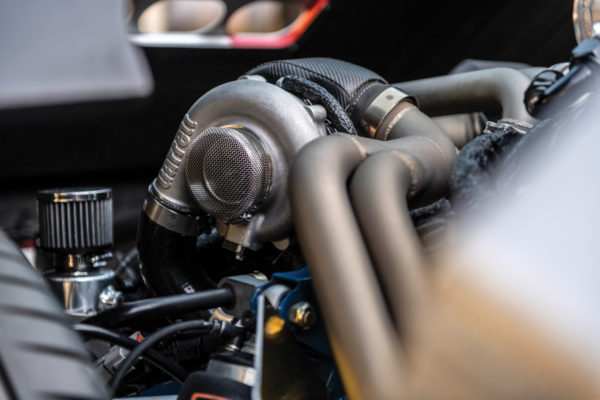
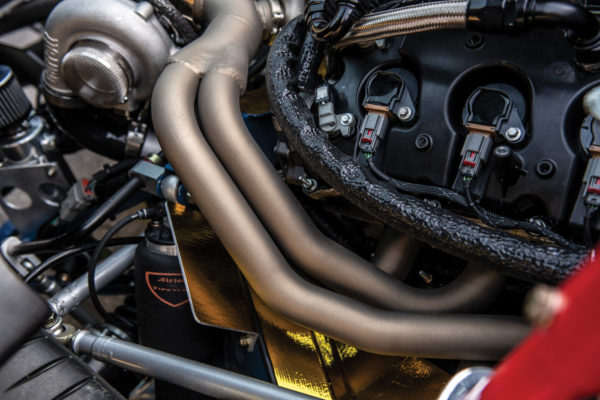
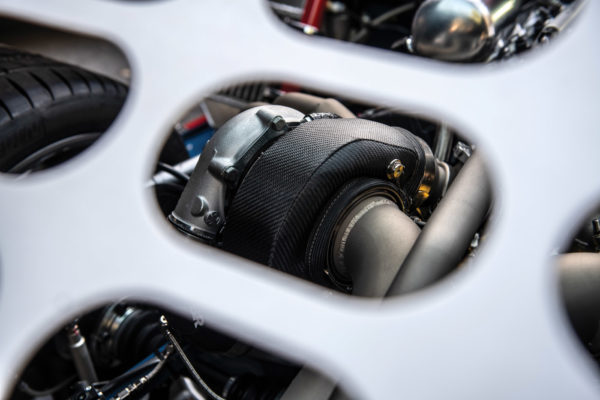
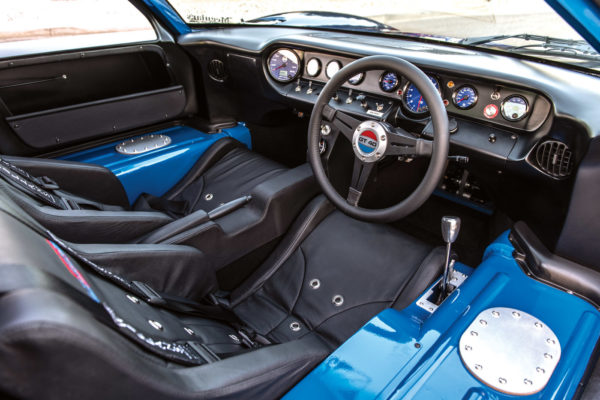
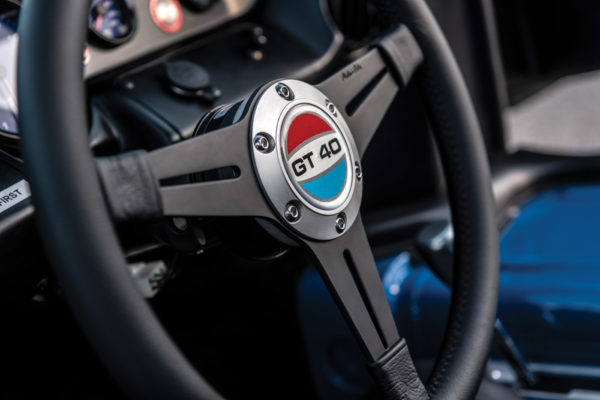
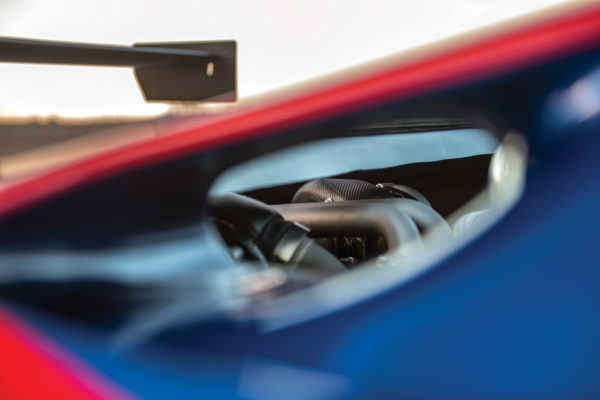
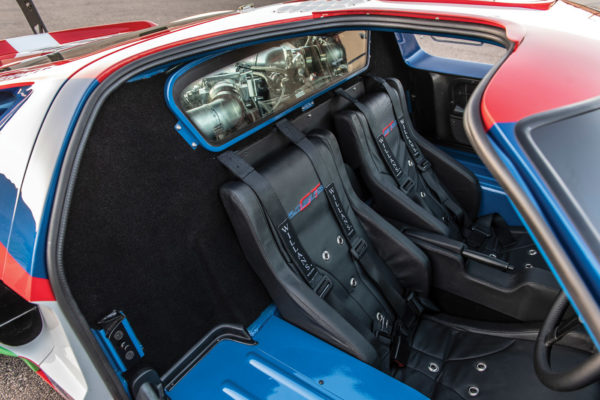
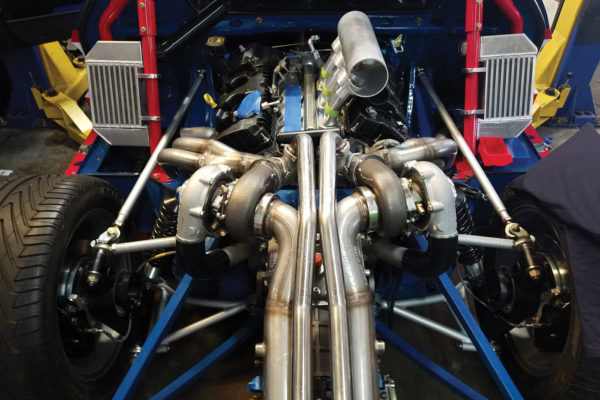
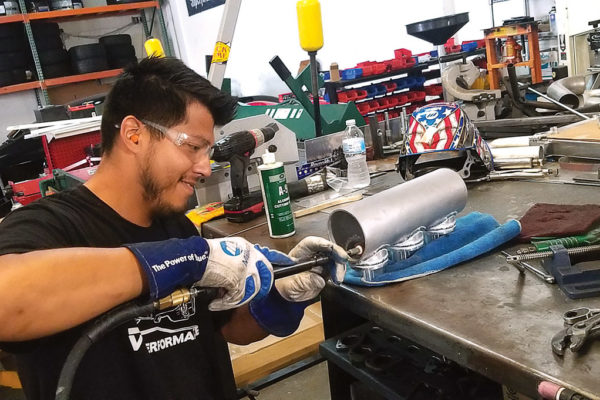
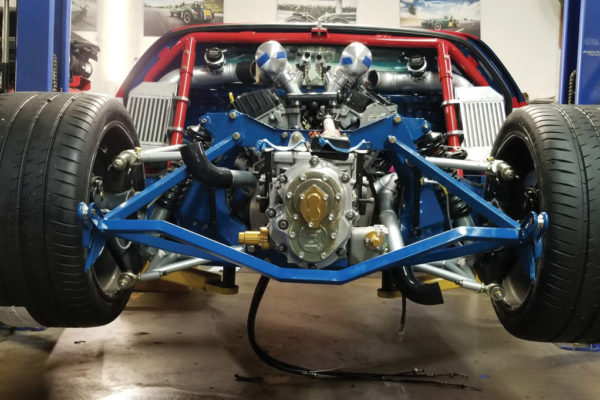
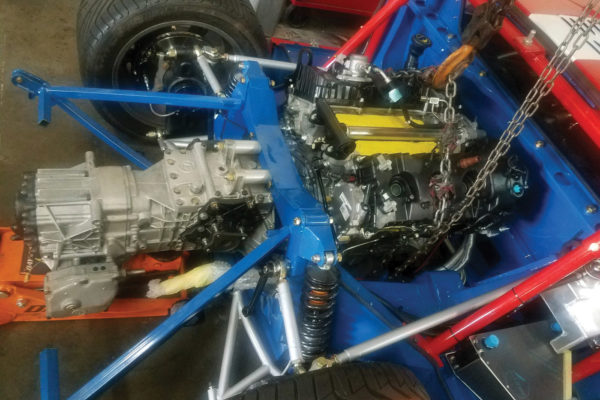
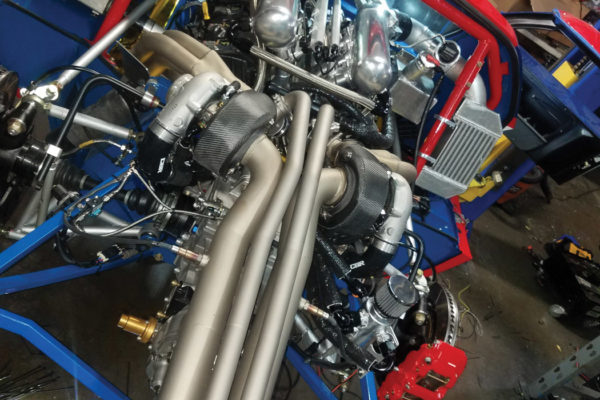
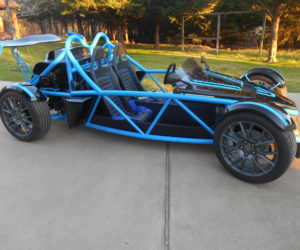
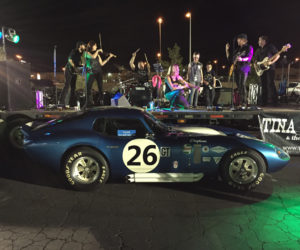

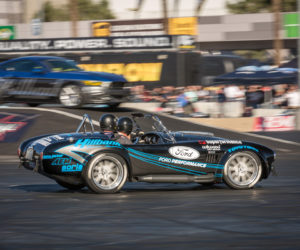
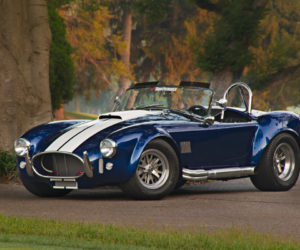
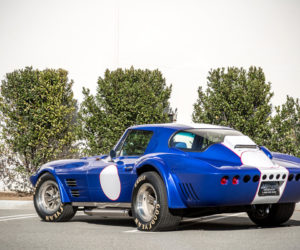




Comments for: Once and Future King
comments powered by Disqus